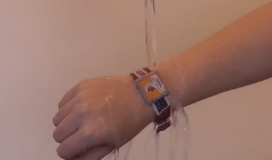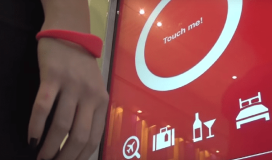Radio frequency identification is a way of transferring small amount of data stored in the passive RFID tags to an active reading device that detects and reads the data when brought in a close proximity of a specified range. In the recent years, RFID technology was only used to support the service sector areas of retail and logistics, but with comprehensive advancements and developments, the RFID technology is becoming ubiquitous and has led to the development of system and smart spaces.
Over the decades, video games and gaming consoles have become a unique form of entertainment which has been loved by people of all ages. In recent years, the development of gaming technology has framed and composed newer designs to implement innate and intuitive forms of gaming interactions between the player and the console. Identification technologies such as RFID, multi-touch technology, virtual reality, etc. have become a part of gaming device leading to an enhanced gaming experience and environment to the user.
The passive RFID tags are used as interaction resources, and are used in conjunction with reading devices which are embedded in the console thus, providing the performance of wonderful gaming with a simple and intuitive gesture made by hand-held gaming accessories equipped with passive RFID tags. RFID readers are used as a motion sensing device installed in the console and PC video and passive RFID tags are used by the users to feed motion in the video games through the movements made by the user.
The radio identification technology such as RFID can be effectively used to transmit the identity of a gamer or an object to the system with the help of activation of radio waves. Based on this method of radio communication different types of interaction can be facilitated, such as touching an object to a hand-held mobile device and helping the user to activate the program to perform the specific task.
The mobiles devices are embedded with the RFID reader thus, allowing multiple authorized players and users to communicate with the system through their hand-held devices fitted with passive RFID tags. The second major component is the projector which shows user interface for the game, and displays the results and also shows feedback. The gaming software is usually supported and run on a PC and they keep on interacting with the RFID tags and reader information which may be in textual and audio format to assist the user in uninterrupted gaming experience.



